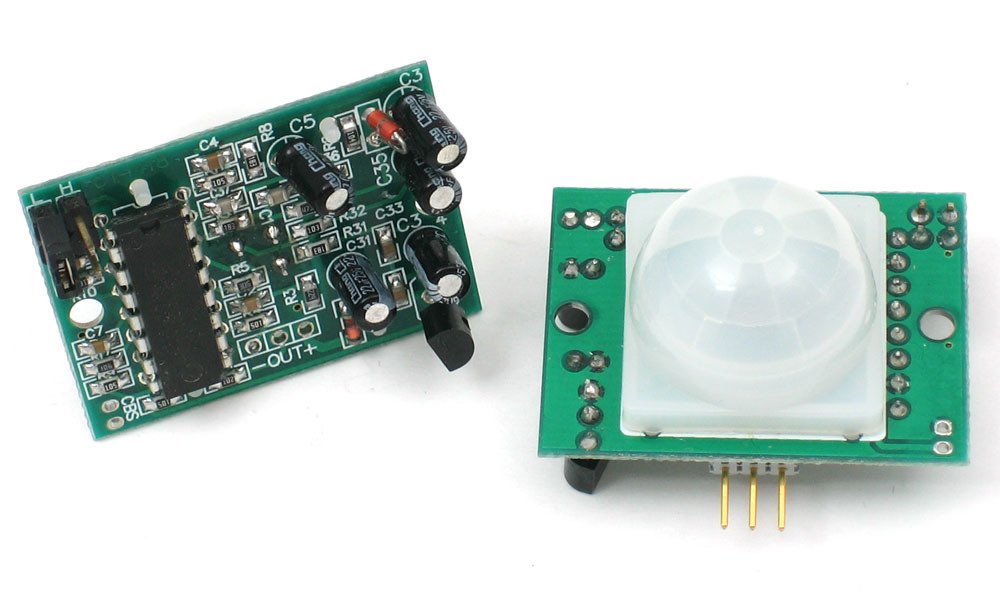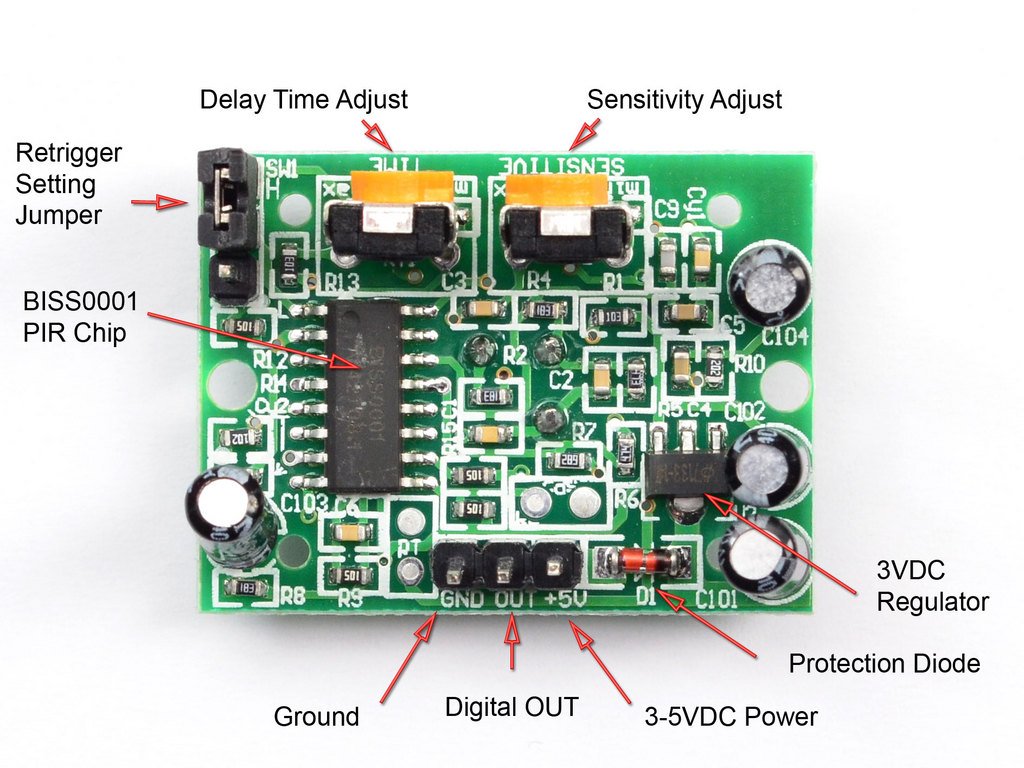PIR Motion Sensor
Background

PIR (passive infrared) sensors allow you to sense motion, almost always used to detect whether a human has moved in or out of the sensor's range. It is good at detecting presence or motion. They are small, inexpensive, low-power, easy to use and don't wear out. For that reason they are commonly found in appliances and gadgets used in homes or businesses.
The PIR detects differences in IR. When the sensor is idle, both slots detect the same amount of IR, the ambient amount radiated from the room or walls or outdoors. When a warm body like a human or animal passes by, it first intercepts one half of the PIR sensor, which causes a positive differential change between the two halves. When the warm body leaves the sensing area, the reverse happens, whereby the sensor generates a negative differential change. These change in pulses are detected and register as motion being detected.

Hardware Description
Pinout
- 5V – 5V
- OUT – digital output connected to the Arduino as a digital input. Goes HIGH when presence detected.
- GND – GND
To finetune detection, you can adjust the delay time potentiometer and the sensitivity potentiometer.
Software Description
Read the OUT signal on PIR as a digital input using digitalRead().
https://learn.adafruit.com/pir-passive-infrared-proximity-motion-sensor